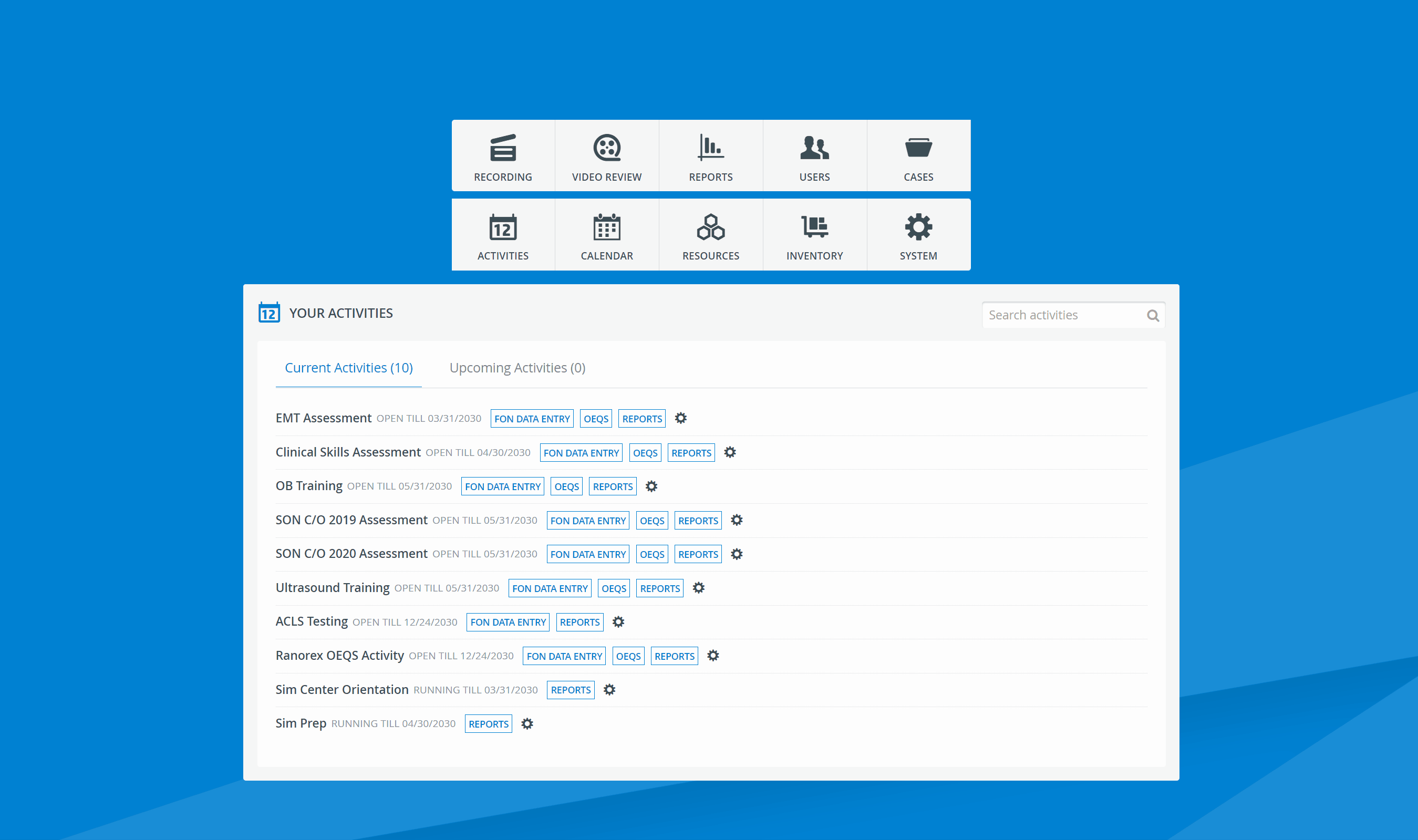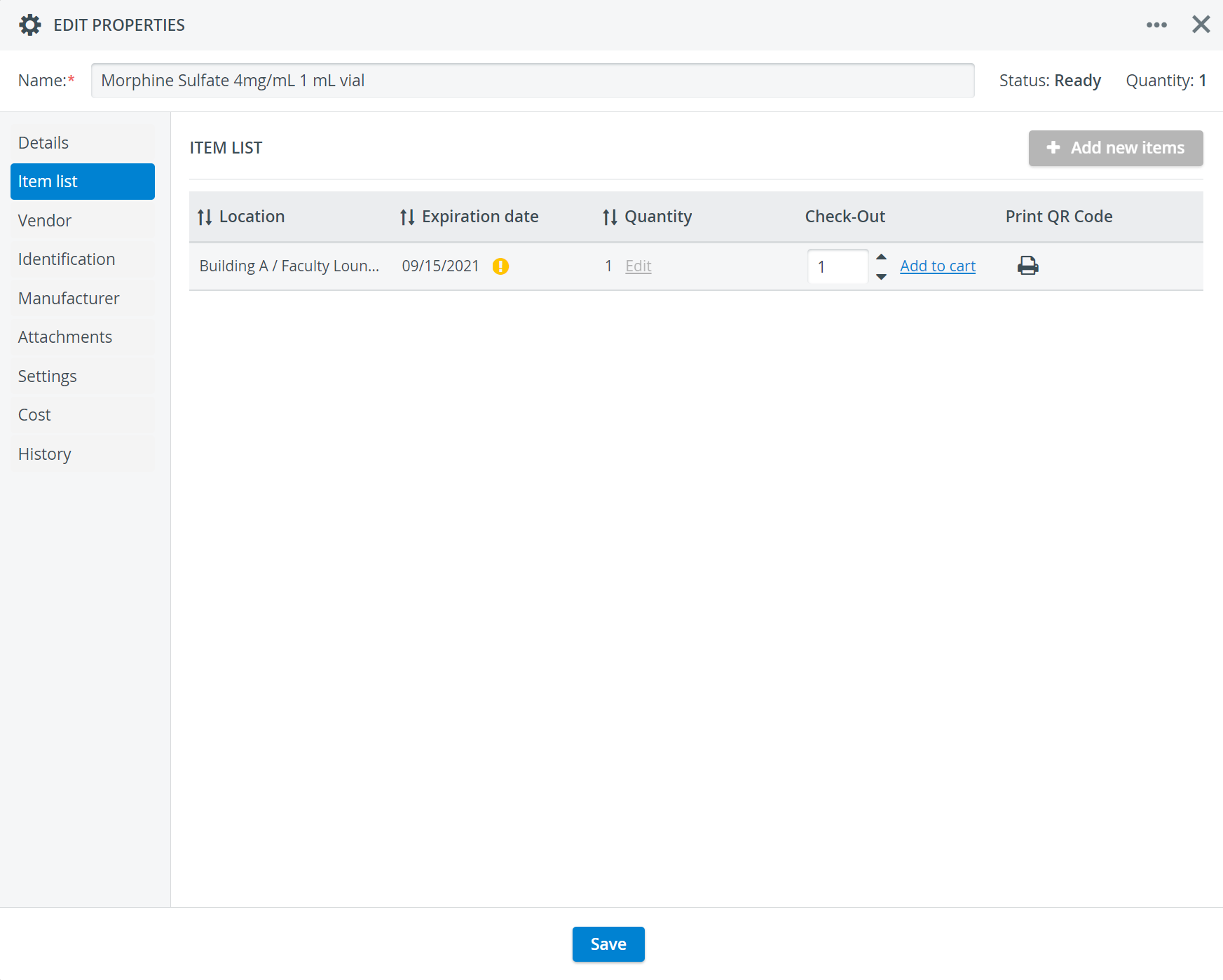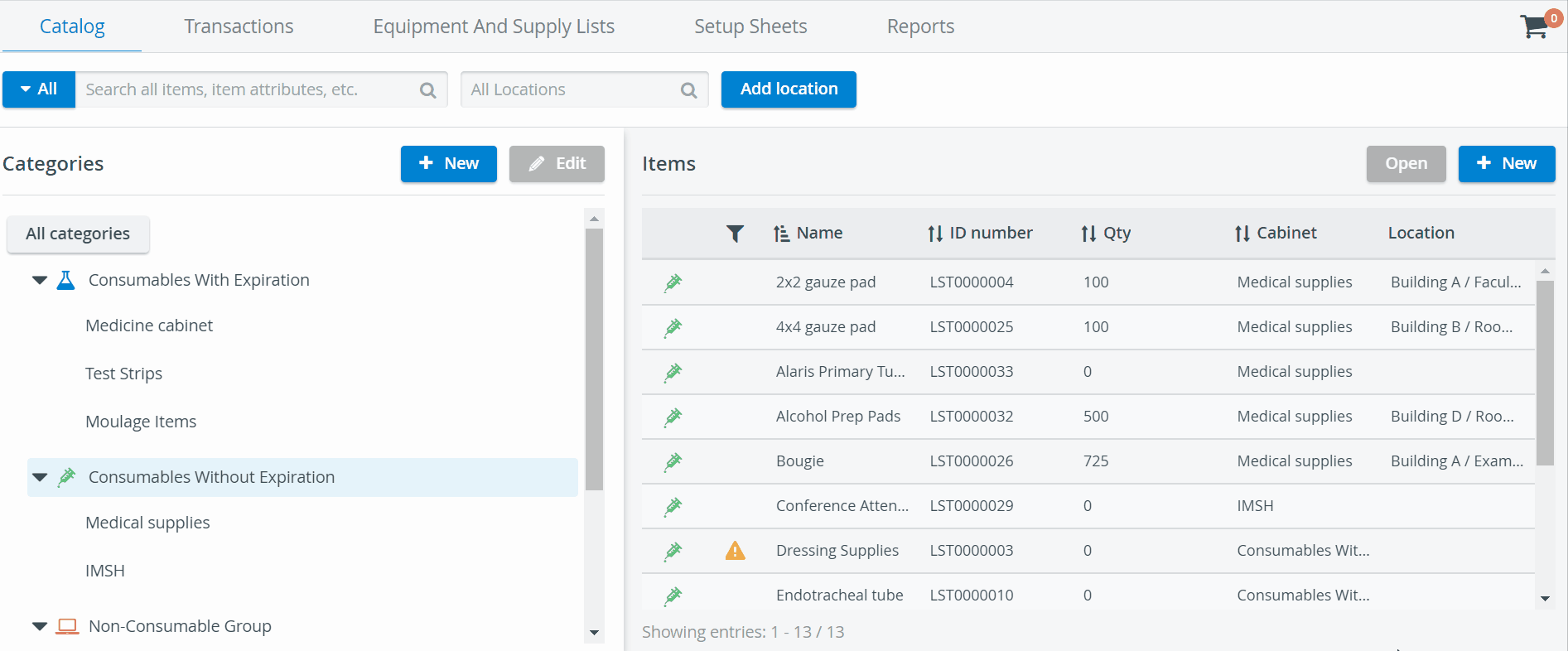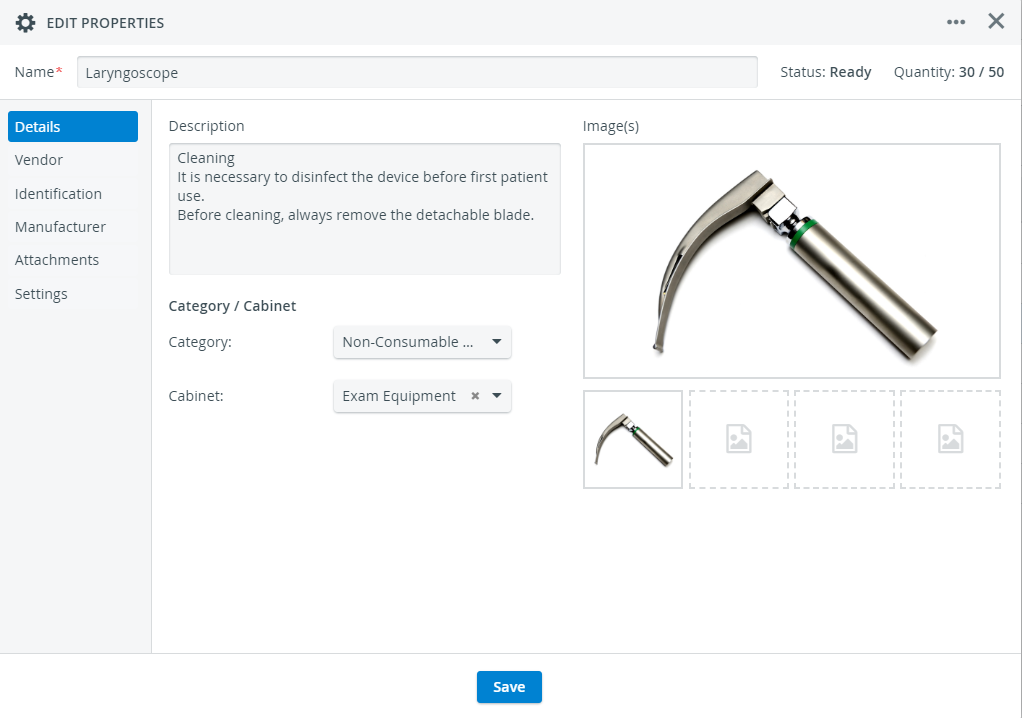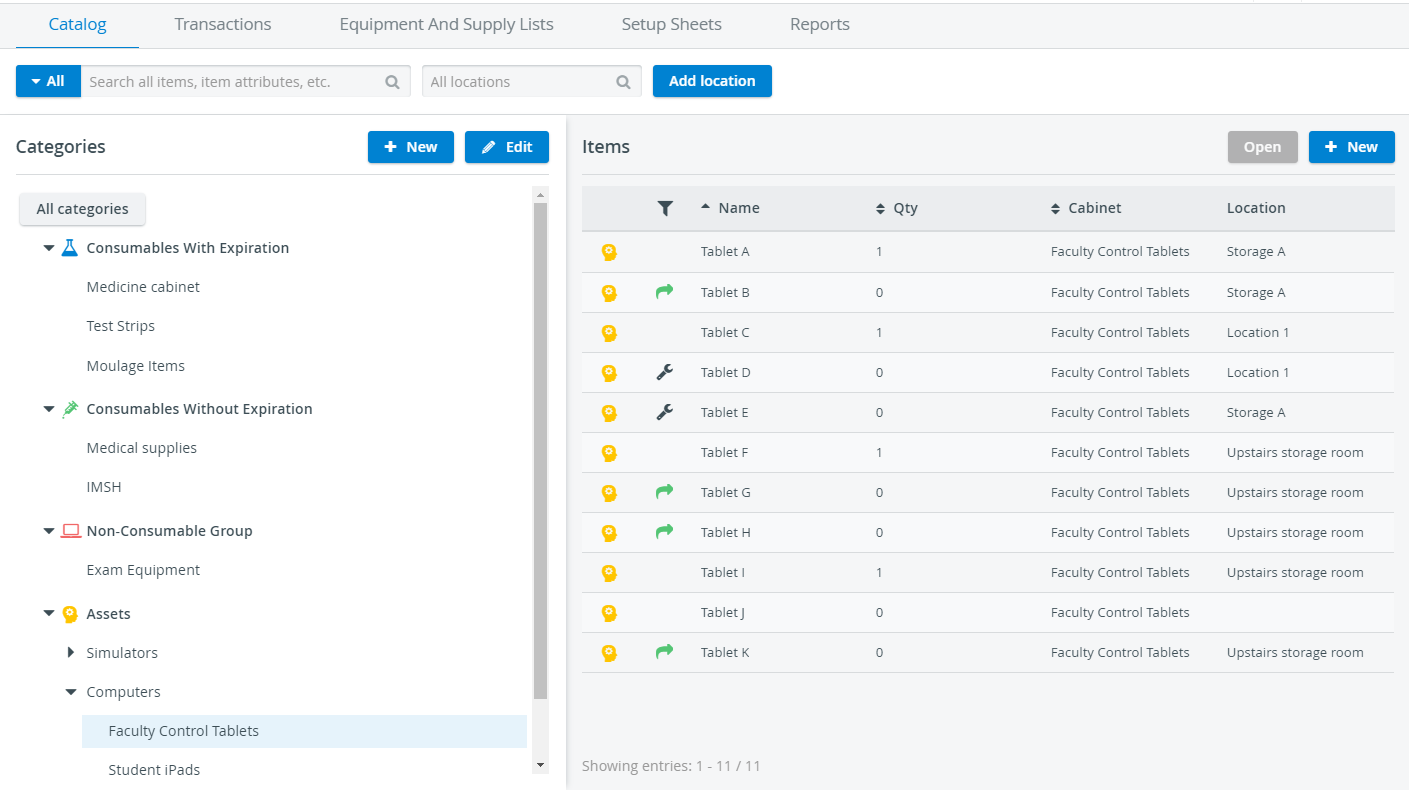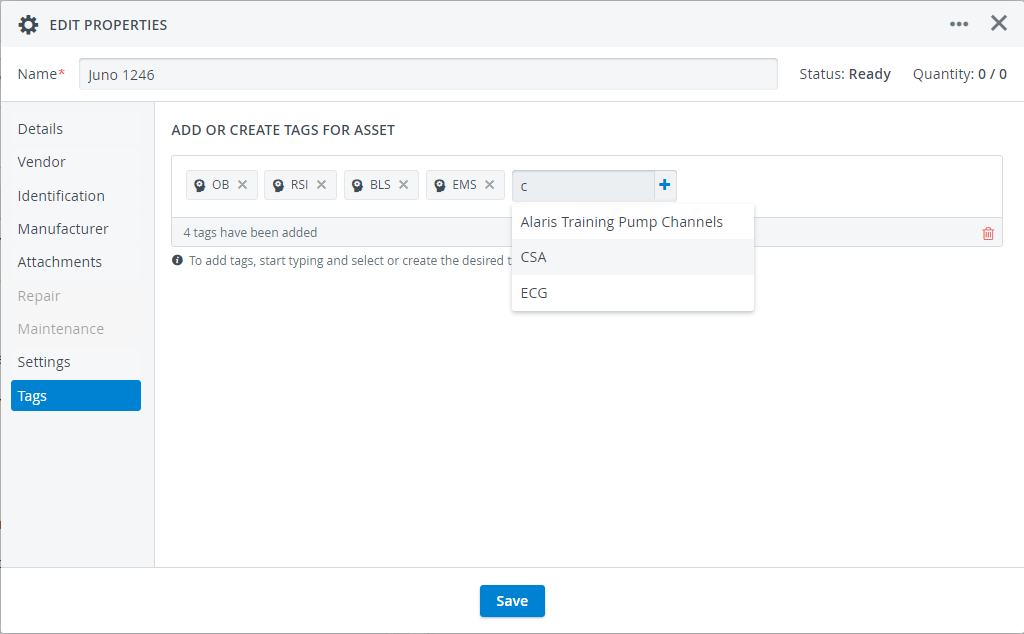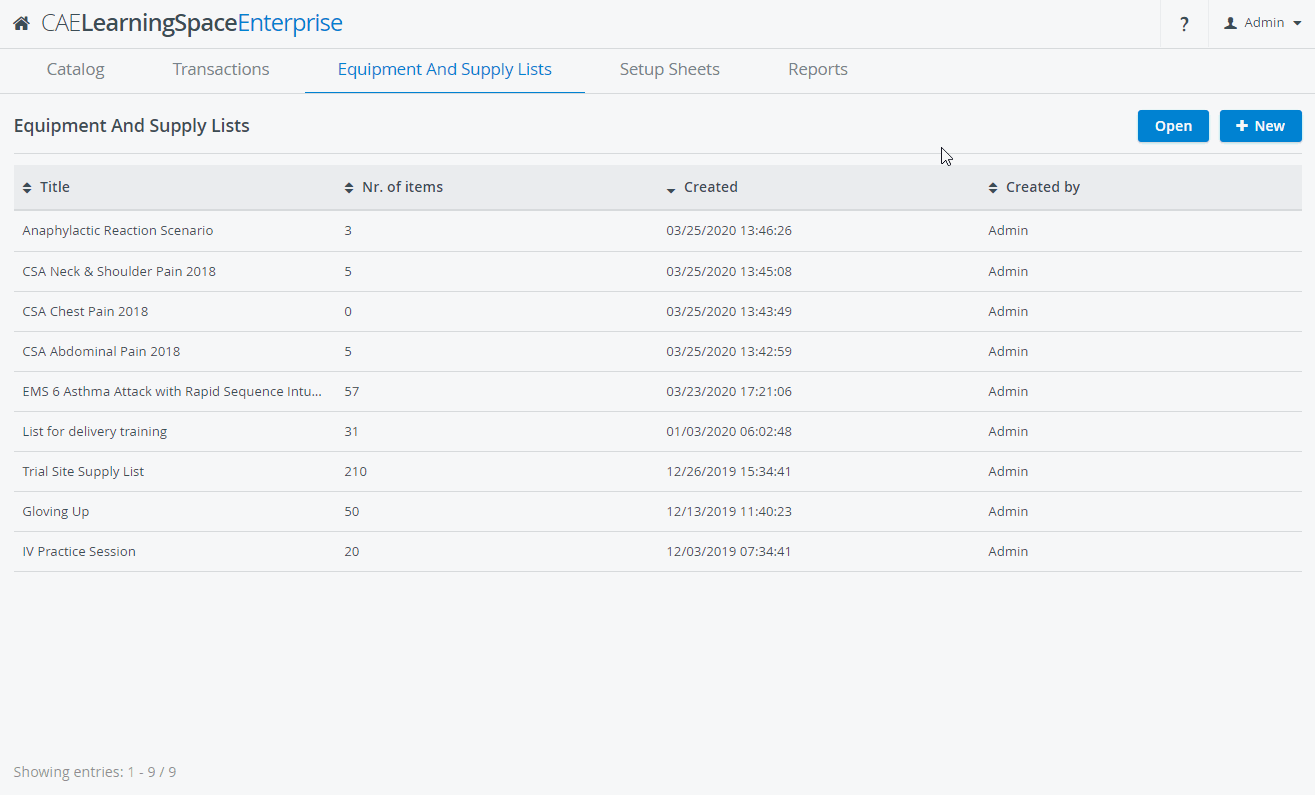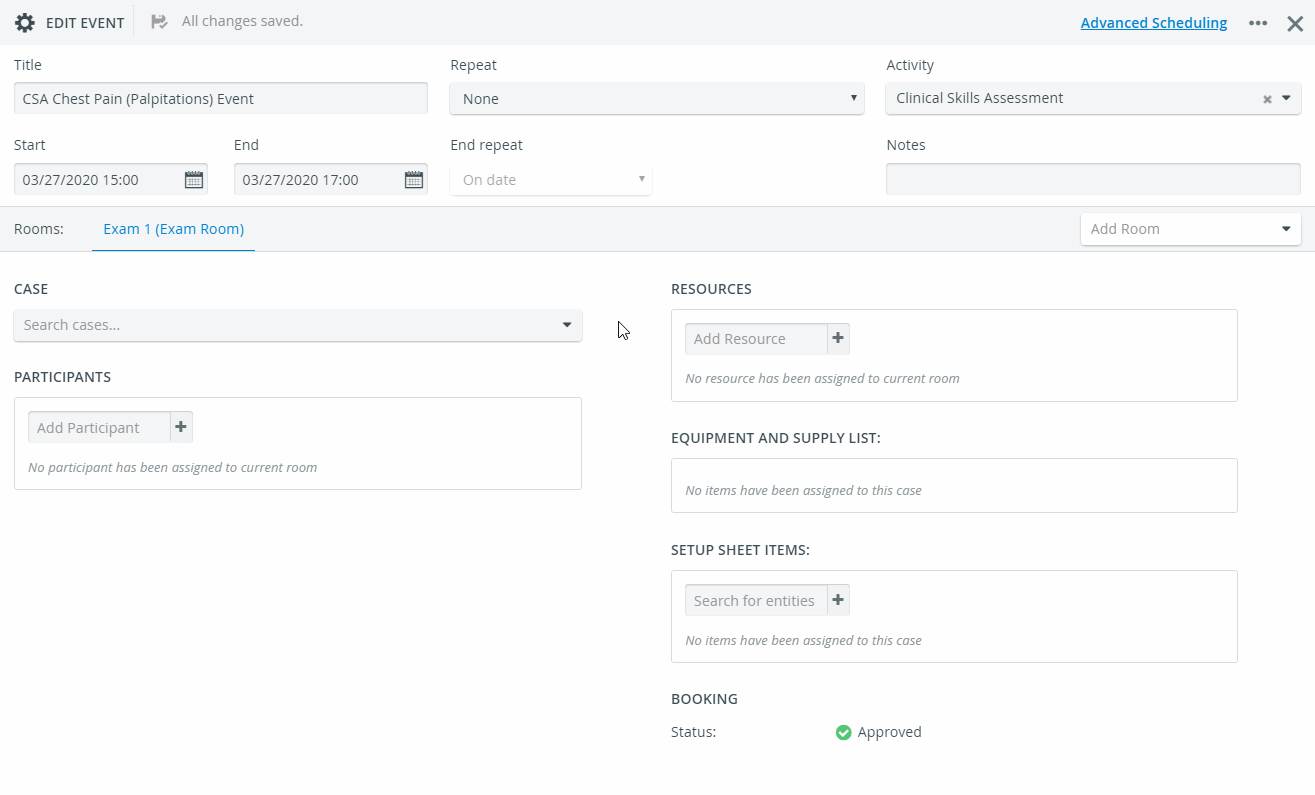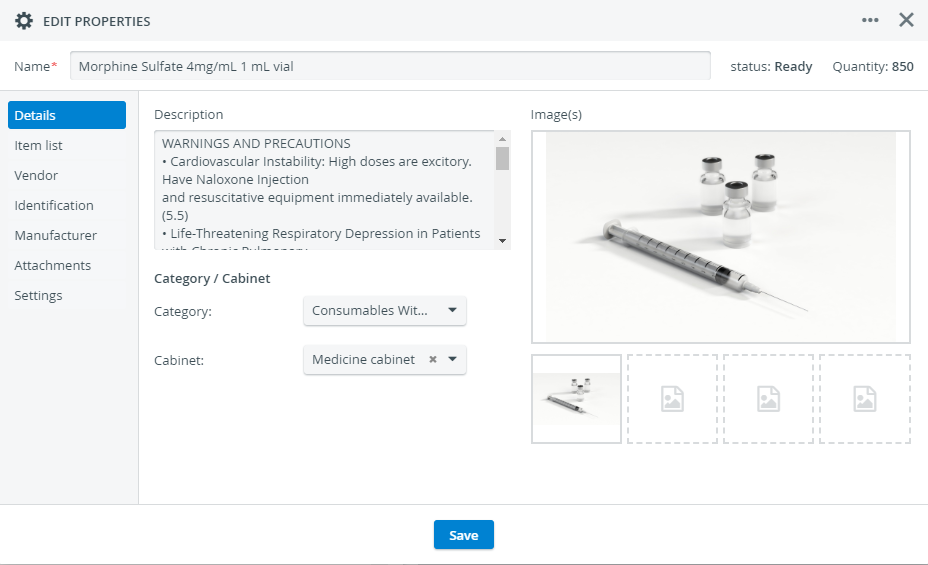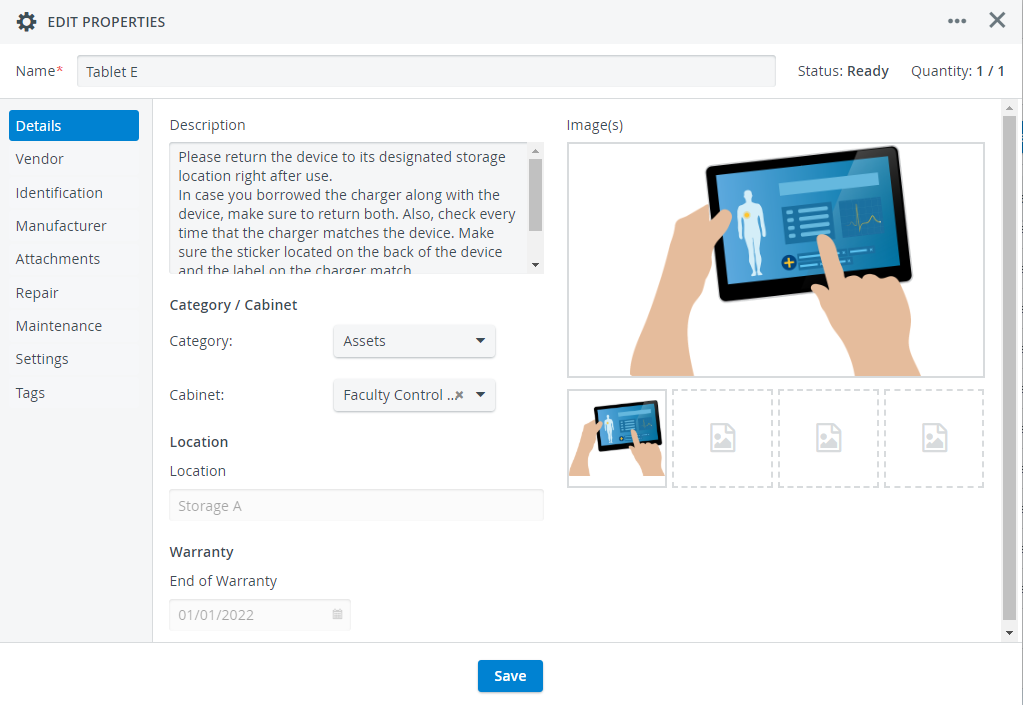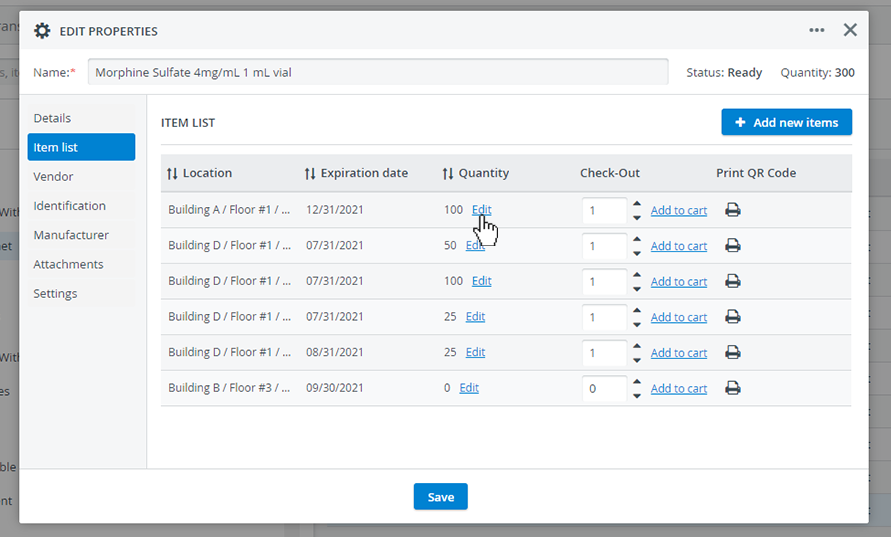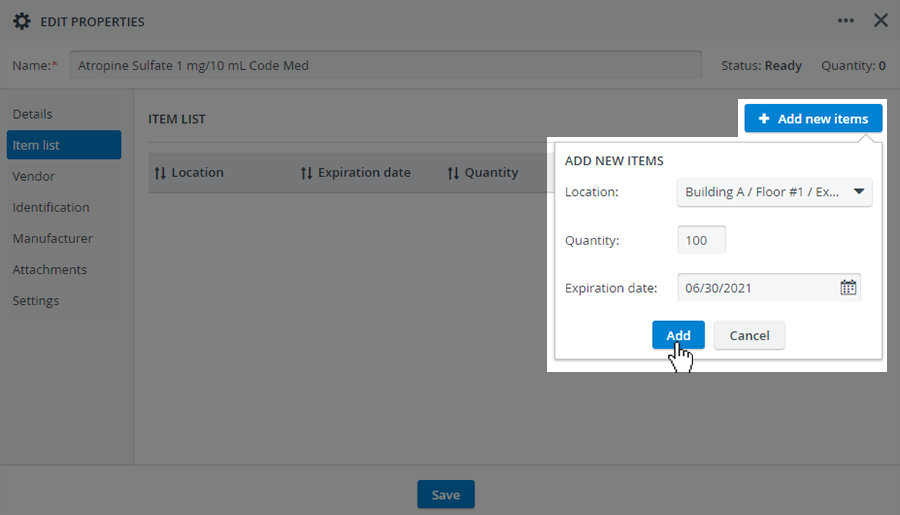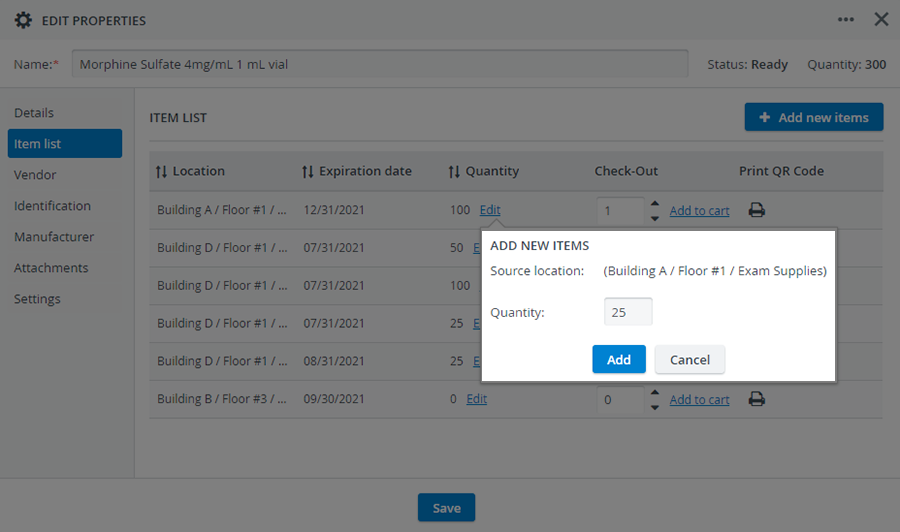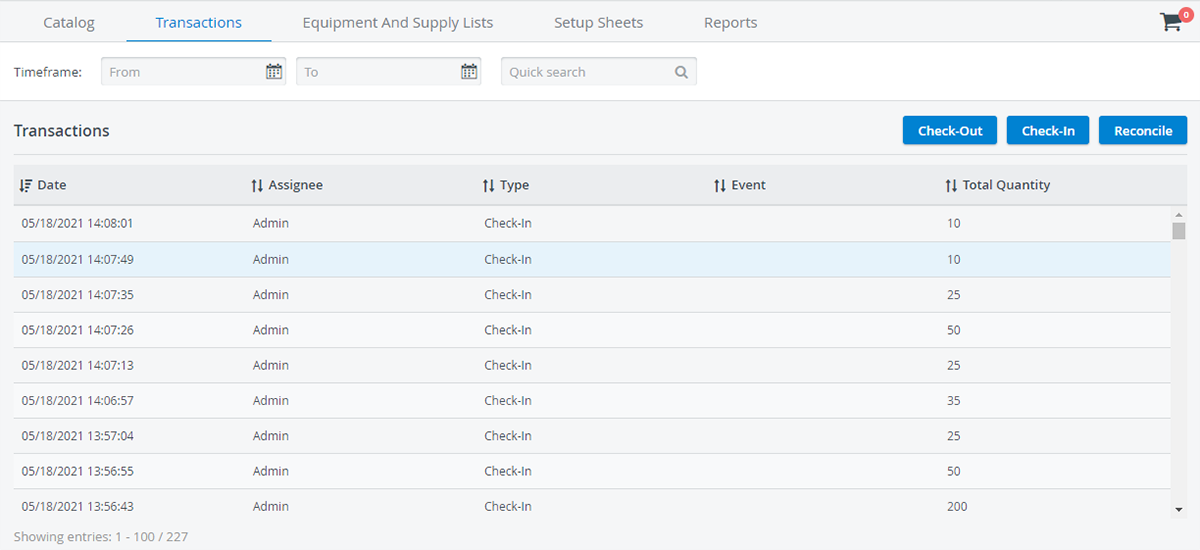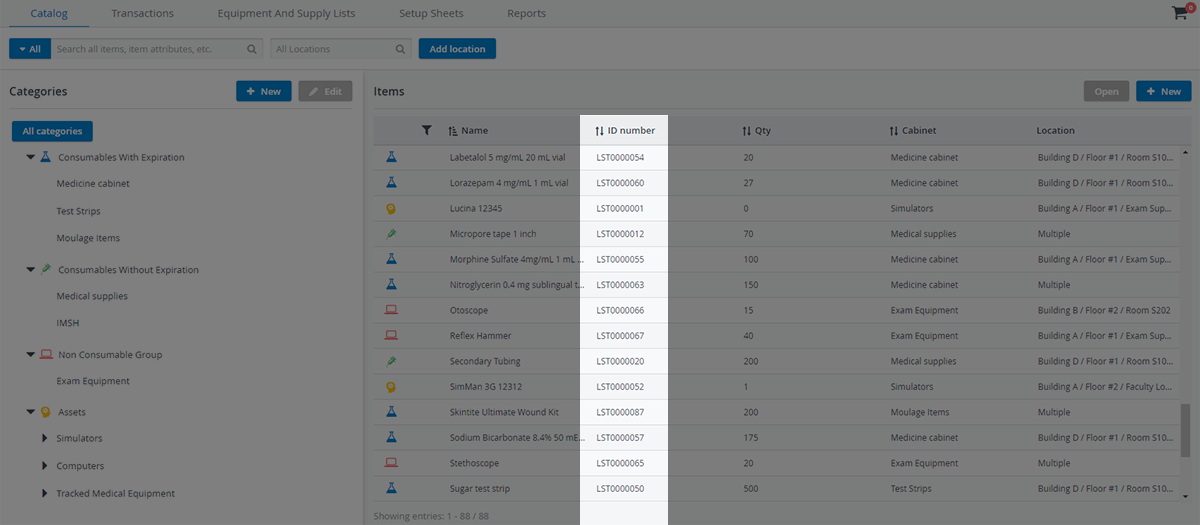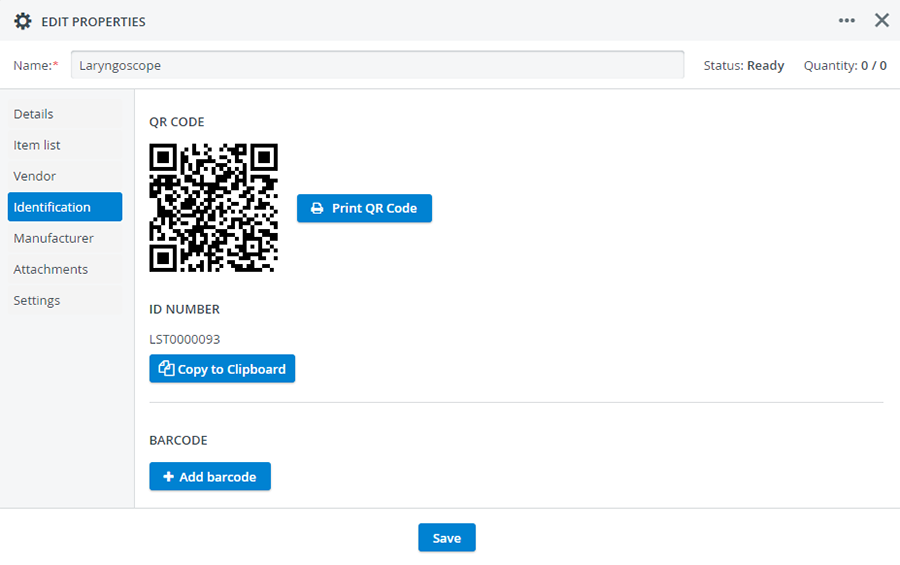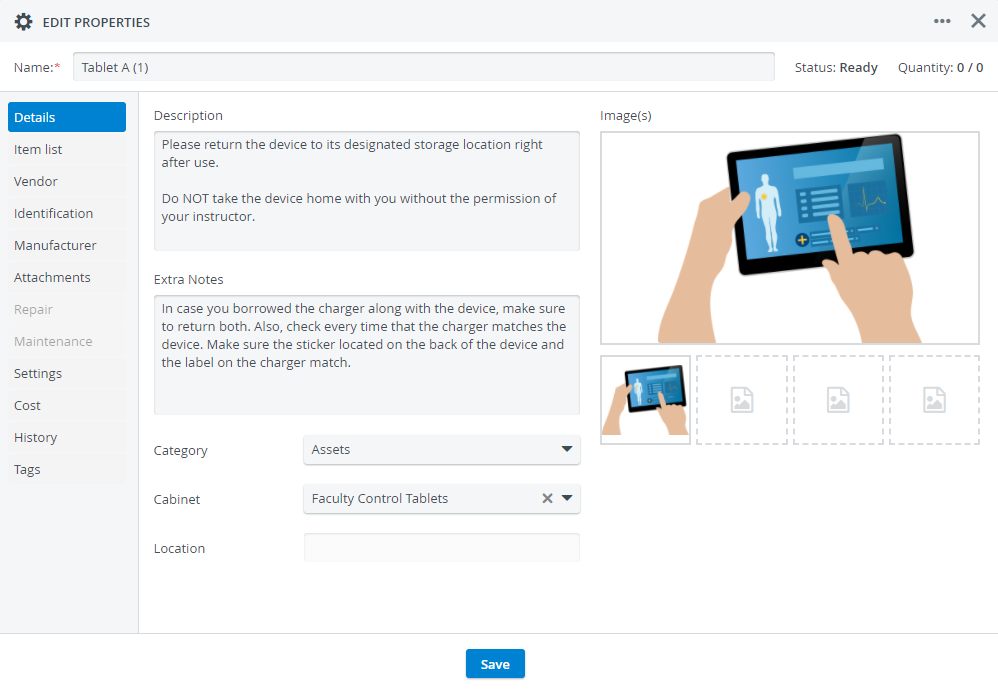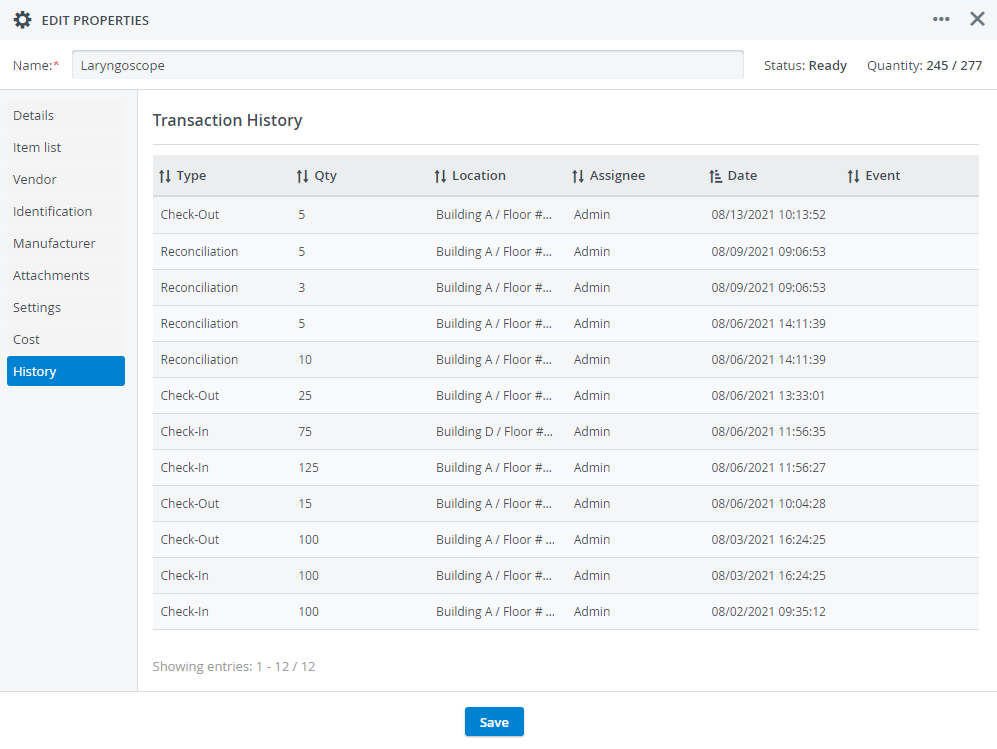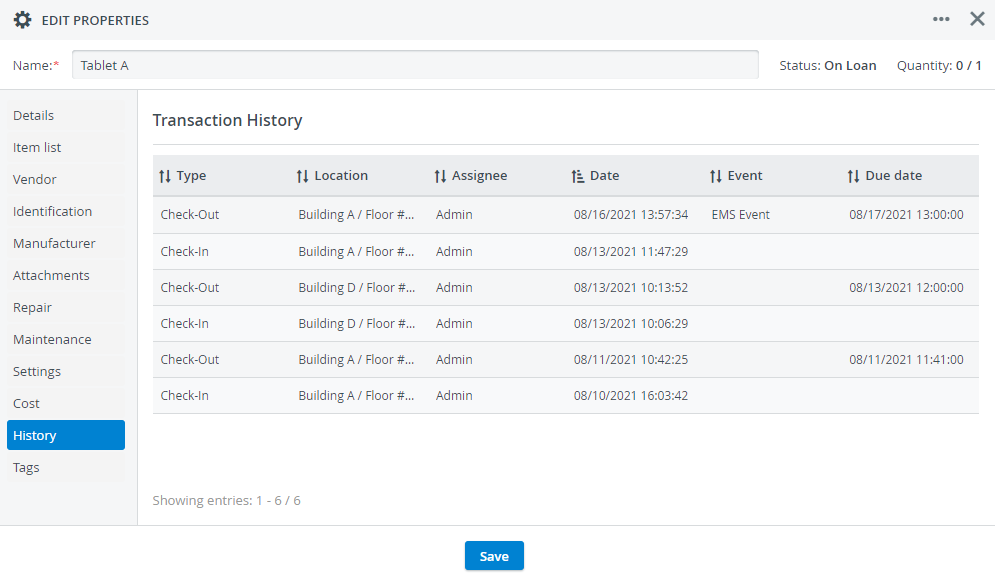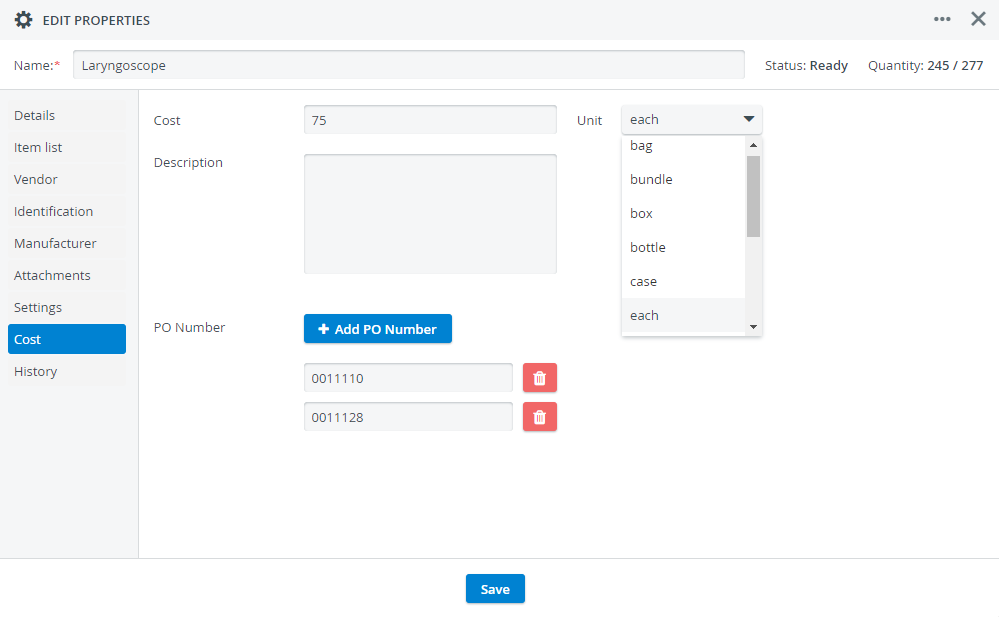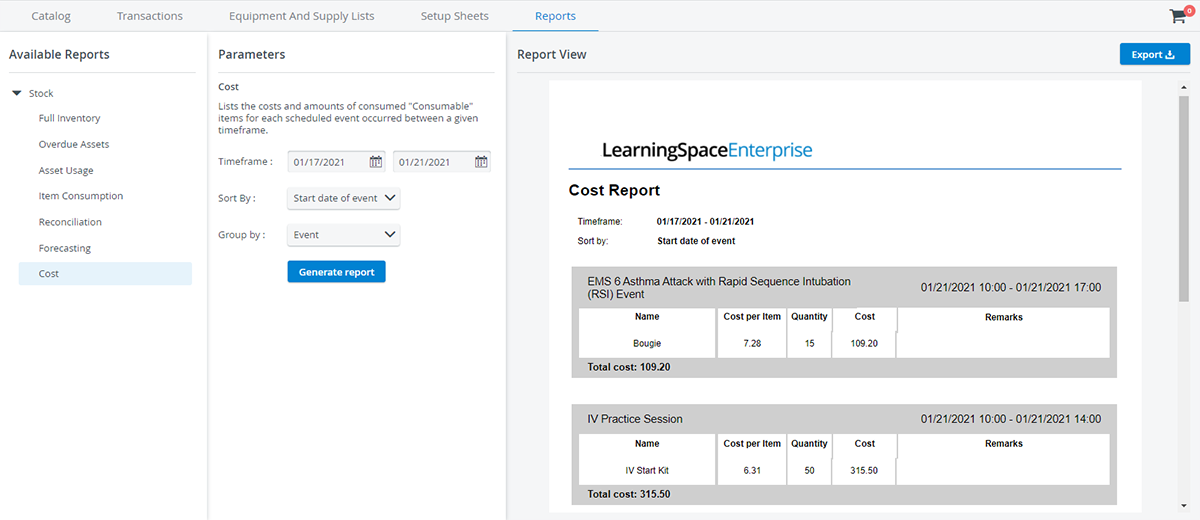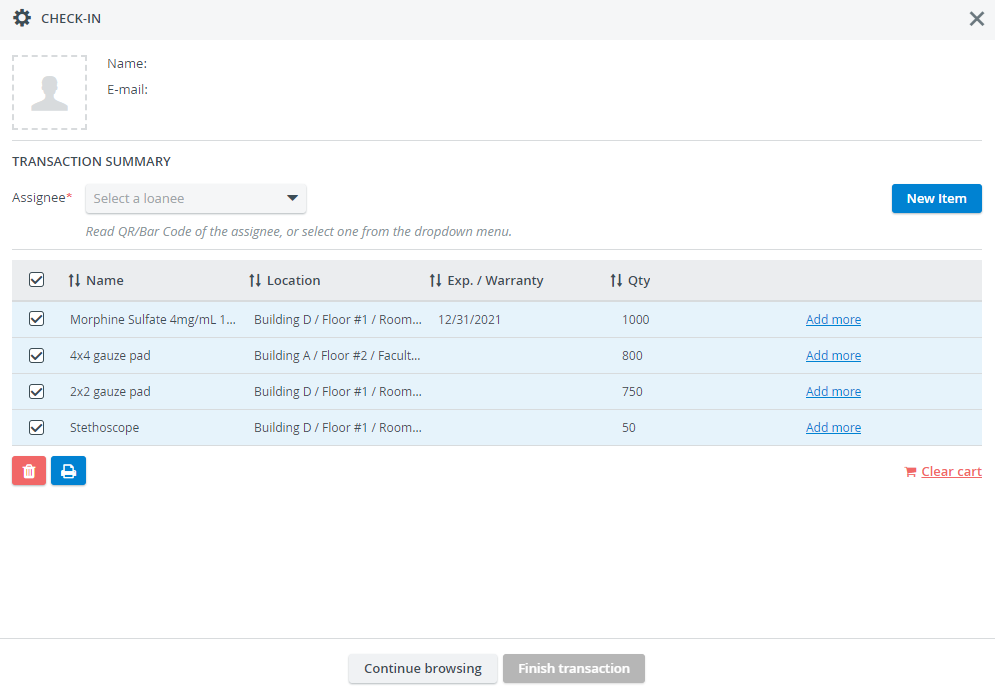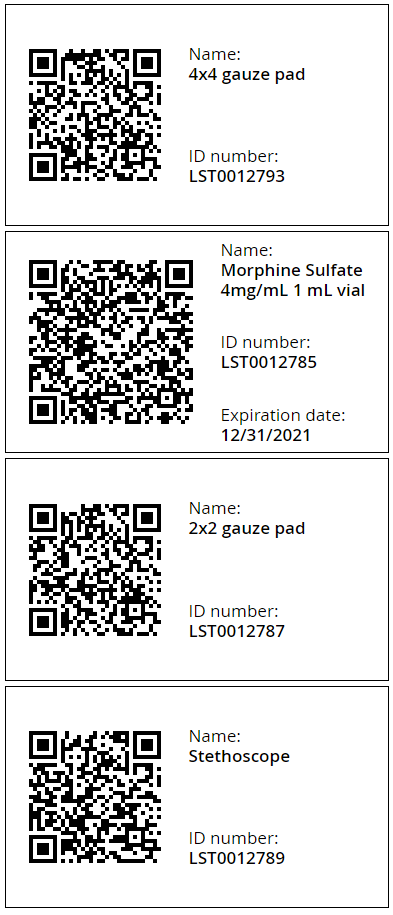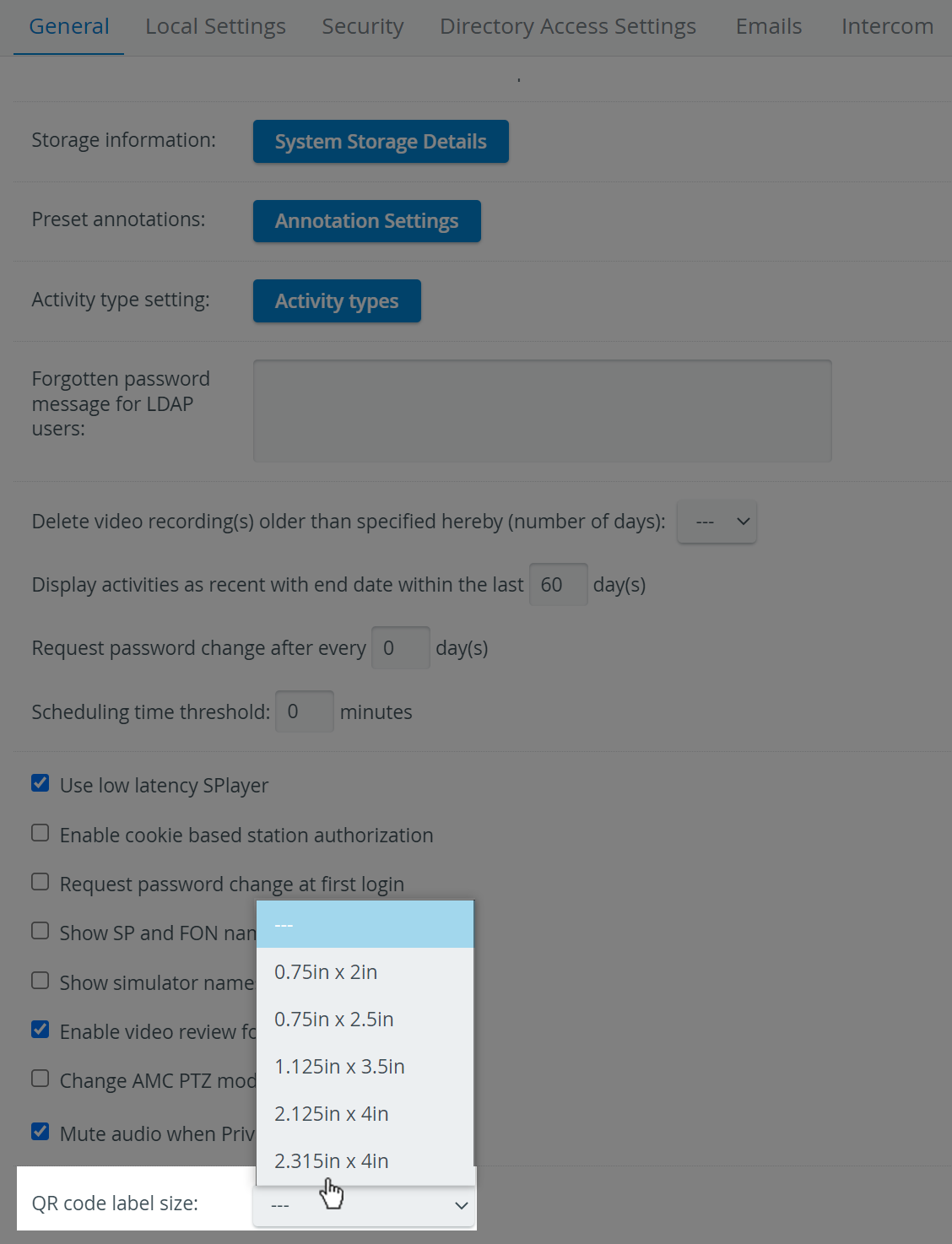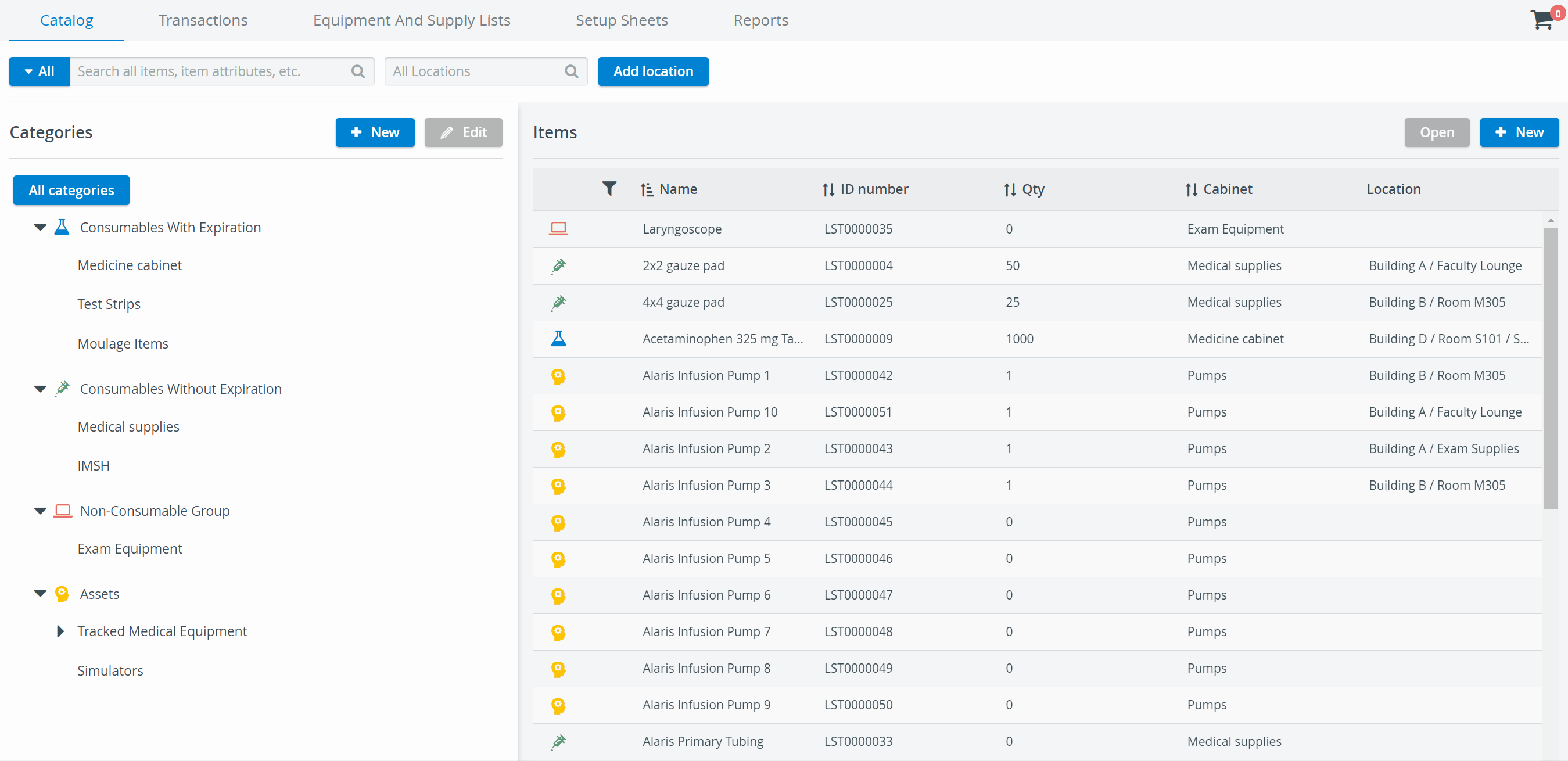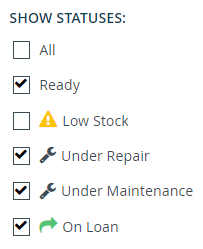Page History
...
...
...
...
...
...
...
...
...
...
...
...
...
...
...
| Note |
|---|
Make sure that the cursor is active inside the barcode field when scanning. |
...
Print the system-generated QR code of specific items to label your physical stock.
| Note | ||
|---|---|---|
| ||
You can only look up an item by QR code if it has been registered in the 24118366 and its QR code has been placed physically on the item. |
| Info | ||
|---|---|---|
| ||
Look for the QR code of an item in the Identification tab—unless it is a Consumables With Expiration item. |
...
Asset Tagging
You can add tags to assets to indicate e.g. for what purpose, by which department, etc. they can be used.
You can also add the same tag to multiple assets to organize them into a subgroup. An asset tag will represent every asset labeled with that specific tag so that when you are assembling Equipment and Supply Lists, you don't need to be specific about the asset you want to use for the scenario, and when preparing the Setup Sheet of an event, you can draw the list of assets labeled with the given tag and simply select one.
In the Edit Properties window of a selected asset, go to the Tags tab to add tags to your asset.
By adding the same tags to multiple assets e.g. CSA to several simulators, you create a subgroup of simulators that can be selected for Clinical Skills Assessment scenarios when you are planning an event.
When assembling the Equipment and Supply List for a scenario, you don't need to decide right away which asset to use; you can add a tag instead that will allow you to choose from multiple assets labeled with that tag.
You only have to specify the asset when you are preparing the Setup Sheet of an event:
| Note | ||
|---|---|---|
| ||
Please make sure that the asset you are selecting for the event is not tied to another event, and is or will be available for your current event. |
| Tip | ||
|---|---|---|
| ||
|
Item Properties
Edit the properties of your items: add a description, an image, or a barcode for the fast identification of each item.
Consumable With Expiration Item Details:
Asset Details & Warranty:
Adding a barcode to a new or existing item:
...
...
...
...
...
...
...
...
...
...
...
...
...

